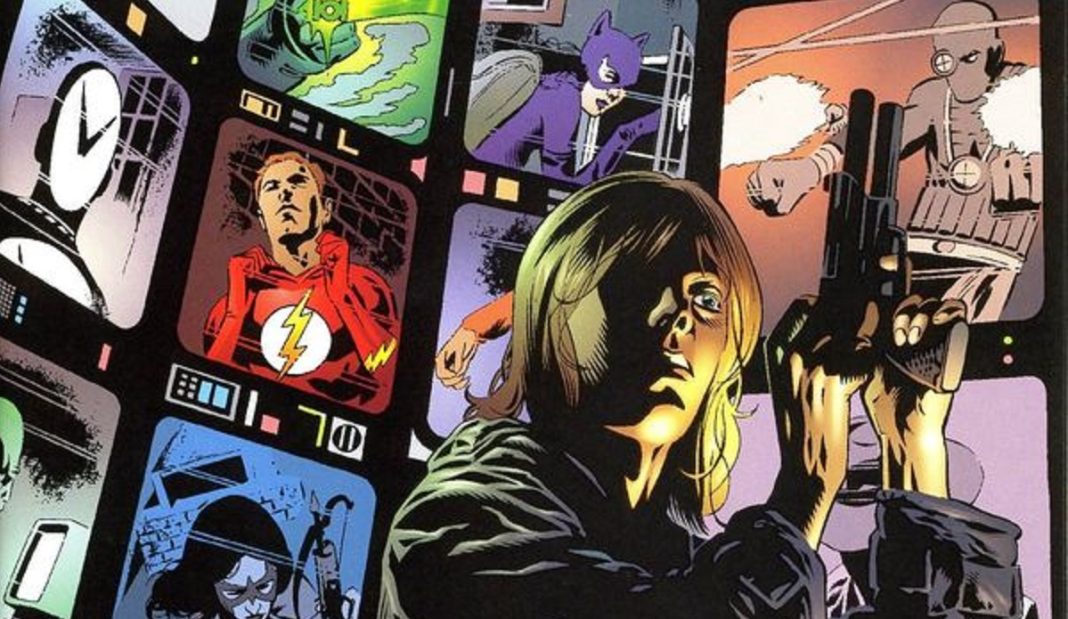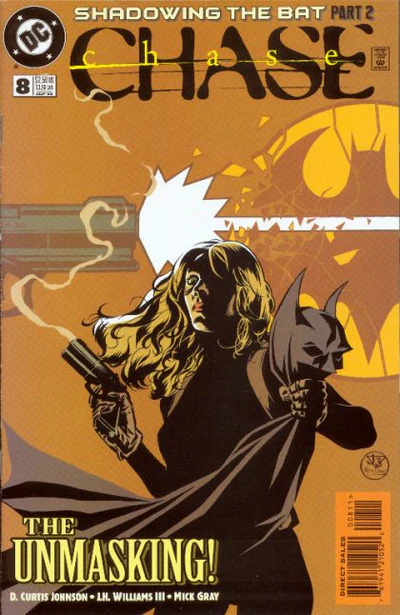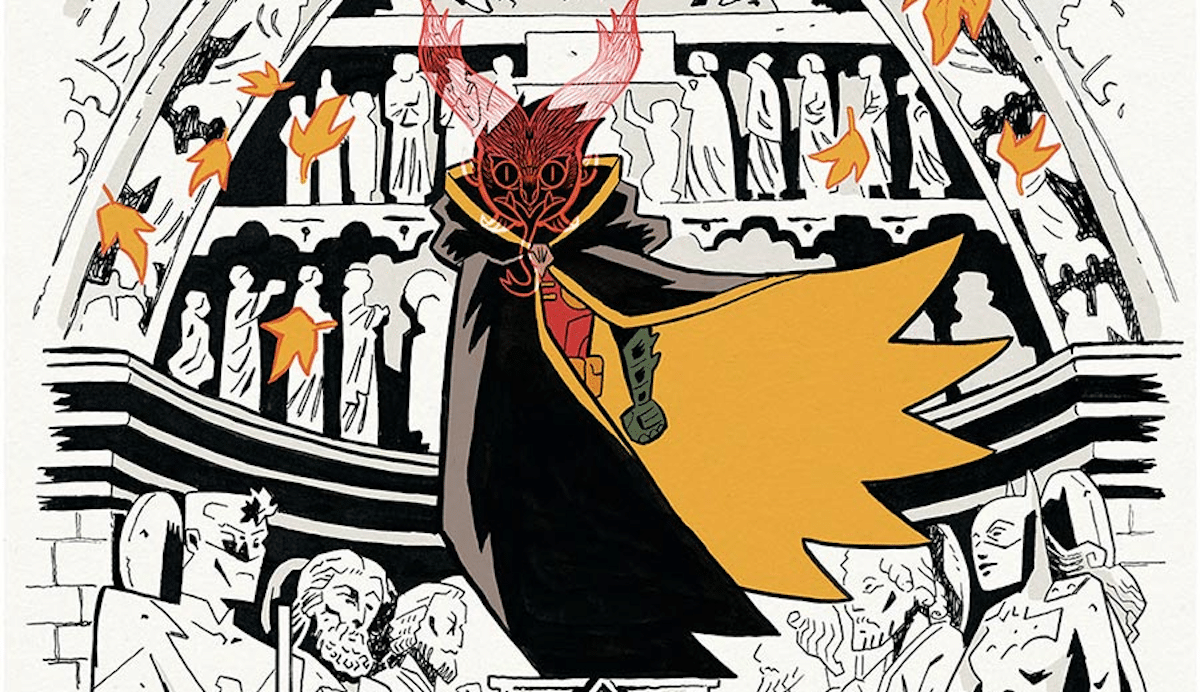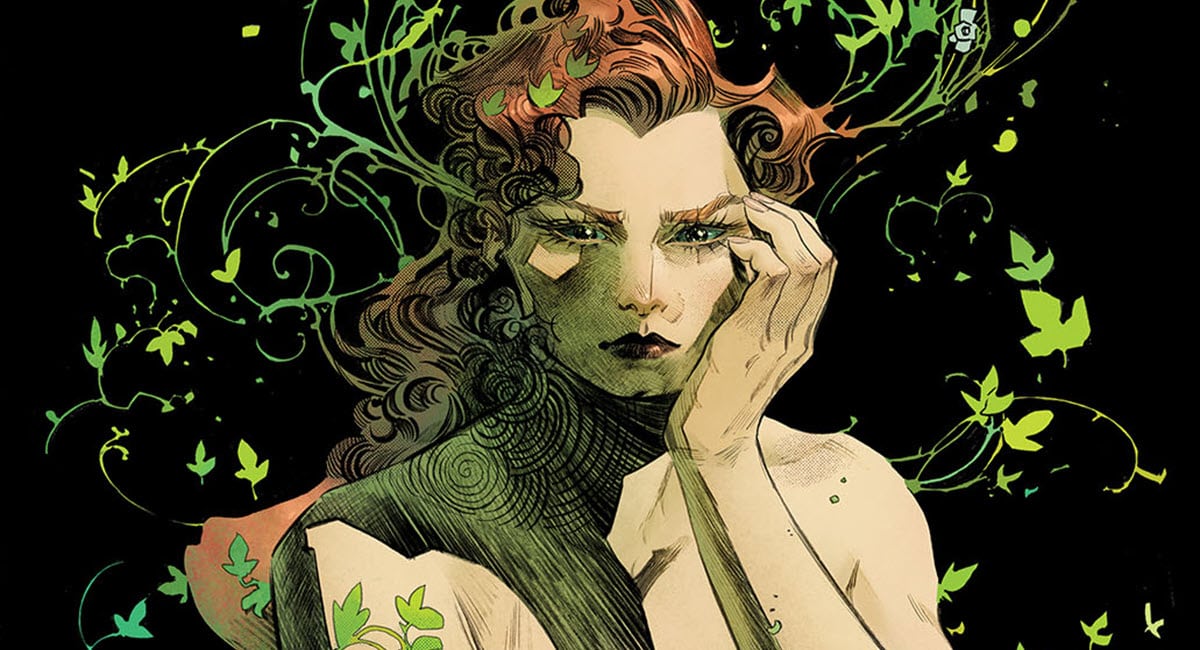Shadowy government organizations. Covert, and sometimes not-so-covert, investigations of weird goings-on with the swankiest of gadgets. Mining the depths of the DC Universe. A personal reason to distrust and dislike superpowers and vigilantes. And a desire to get to the secrets at the heart of it. This was the world that served as a backdrop for the cases of Cameron Chase, an agent of the Department of Extranormal Affairs. It felt like a series that was well ahead of its time.
“So, Bats, how’s the wife and kids?”
Chase #7-8, from D. Curtis Johnson, JH Williams III, Mick Gray, Lee Loughridge, and Comicraft, sends Agent Chase to Gotham City to track down a mutagenic drug that’s changing people into demons. Only it’s kind of a feint. While there is an illicit drug ring, there’s a second purpose to Chase’s trip to Gotham, finding out the true identity of Batman.
Though there is a continuing throughline of Chase’s personal life and her familial reason for her position regarding superheroes, this story pretty much stands on its own and can be read without any prior knowledge. It revels in Chase’s cynicism and sarcastic wit, adding a kind of gallows humour and irreverence to the thriller aspects. The dialogue from D. Curtis Johnson definitely keeps the story flowing. It’s also very interesting when the story shifts gears and we see the assumptions that are made about who Batman might be.
The credits for the issue don’t state who at Comicraft ultimately lettered these issues. Not even a credit to “Richard Starkings & …”. It is, however, some great work, playing with the different shifts in narrative structure, incorporating a flair for style into the overall design of the pages. The text conversations, digital journal entries, and unique balloons for the demons add to the overall inventiveness of the story.
“Whoever he is, he’s too damn good to catch this way.”
I feel like JH Williams III really levelled up between 1996 and 1998. He locked on to a style of his own, synthesizing various influences into a unique and distinctive style. During this period, he started incorporating page borders into his layouts, along with experimenting with round panels and variants on grids. To me it makes the pages interesting even just from a design aspect. I find it very structured compared to what will come later, though that’s part of what makes this era captivating.
It’s fairly dark, shadowy, and featuring thick lines. A large part of which is likely in part to Mick Gray’s inks. Gray takes a similar approach to art from Patrick Gleason. It’s a wonderful look, perfectly fitting both the shadowy DEO investigations and the grittiness of Gotham. The Williams and Gray team really just seemed to produce masterpiece after masterpiece.
The noir elements of the story and art is enhanced by Lee Loughridge’s colours. The blues and yellows that centre the colour palette work well to ground Gotham/ It also allows for the reds of the demons stand out even more as an alien element.
“You youngsters – no patience at all.”
Sadly there were only two more issues after this arc. And one of them was a flash-forward that tied into the DC One Million event. I think that with its emphasis on a kind of law enforcement and exploration of what makes superheroes tick, Chase presaged other series as disparate as Gotham Central and Planetary. It’s a shame that it didn’t catch on at the time. The “Shadowing the Bat” arc, however, in Chase #7-8, from Johnson, Williams, Gray, Loughridge, and Comicraft remains an entertaining crime story that evolves into a declaration of principles.
Classic Comic Compendium: Chase #7 & #8 – Shadowing the Bat
Chase #7 & 8 – “Shadowing the Bat”
Writers: D. Curtis Johnson & JH Williams III
Penciller: JH Williams III
Inker: Mick Gray
Colourist: Lee Loughridge
Letterer: Comicraft
Publisher: DC Comics
Release Date: June 17 1998 – July 15 1998
Available collected in Chase and Tales of the Batman: JH Williams III
Read past entries in the Classic Comic Compendium!












